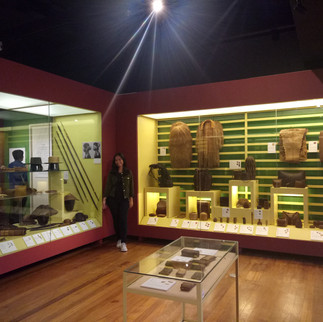Cultural Tour 2
- yolaivonnyharianto
- Sep 8, 2018
- 2 min read
Updated: Oct 5, 2018
A little bit tiring but exciting day, visited 4 places by just walking.
On this second cultural tour, we were not accompanied by Dr.Stephen, but with his colleague, Sir Jeremy. We met him at Isetann, a little bit waiting actually. After meeting with him, we went to National Museum by jeepney. We firstly entered the National Museum of Anthropology, there are a lot of historical and traditional heritages there such artifacts and kitchen equipments, we also can see the cultural heritages like traditional music instruments and traditional costums of Filipinos. Some of them looks like Indonesia's heritages.
Out of the Anthropology museum, we moved to another one, it was Natural History museum. There, we could see a lot of Philippines’ fauna, botanical illustrations and paintings, mini-mangrove forest and beaches recreated, a marine life exhibit, and the most exciting piece to see was Lolong’s skeleton. It was crowned as the world’s largest crocodile in captivity by Guinness World Record, one of the largest crocodiles ever measured from snout-to-tail.

Some views you can see in National Museum of Natural History
Getting rest for a while before we continuing to the next place, Intramuros. We reached it by just walking. Intramuros is actually the historic walled area within the modern city of Manila. It was the nerve center of the Spanish occupation in the Philippines, home to several thousand Spanish colonists, their families, and their Filipino servants.

Some views you can see along Intramuros
On the end of our second cultural tour, we visited Fort Santiago. It is a citadel first built by Spanish conquistador. It is one of the most important historical sites in Manila. Several lives were lost in its prisons during the Spanish Colonial Period and World War II. Jose Rizal, one of the Philippine national heroes, was imprisoned here before his execution in 1896. The Rizal Shrine museum displays memorabilia of the hero in their collection and the fort features, embedded onto the ground in bronze, his footsteps representing his final walk from his cell to the location of the actual execution.


















































































































Comments